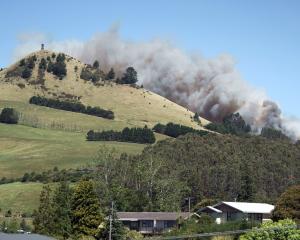
And Otago towns already struggling with poor air quality records could soon appear more degraded even as air quality improves around the region.
National air quality standards were under review, and more finely-tuned air quality sensors were due to replace current technology, Otago Regional Council air quality scientist Sarah Harrison said.
Arrowtown, Clyde, Cromwell and Milton would receive new air quality monitoring sensors this year.
And region-wide monitoring of fine particulate matter with a diameter of less than 2.5 micrometres (PM2.5) would soon begin at all seven council air quality monitoring sites, Ms Harrison said.
At present, only central Dunedin monitored PM2.5, the atmospheric particulate matter associated with vehicle emissions and solid-fuel burning for home heating, she said.
The current standard of 10 micrometres, or PM10, included PM2.5 but also less harmful dust, sea salt, or pollen.
As the new national environmental standards for air quality came in, PM10 would continue to be monitored in Dunedin, Arrowtown and Mosgiel.
An air quality monitoring upgrade for Alexandra was also already planned for the 2022-23 financial year, but more work was needed to determine what kind of monitoring station would be installed and exactly where, Ms Harrison said.
Estimates she provided indicated the programme would cost more than $400,000.
The Ministry for the Environment had yet to confirm a date for when the new national standards would take effect, but consultation wrapped up last year and the new rules were on their way, she said.
In her 2020 annual air quality report to the council’s data and information committee this month, Ms Harrison said over winter last year the PM10 standard was exceeded 80 times across six of the seven monitored towns in Otago.
Only Dunedin was in the clear.
Analysis of long-term trends showed overall concentrations were decreasing in some airsheds, including Arrowtown, but significant decreases in emissions were still required to meet the outgoing national standards for PM10, she said.
While PM10 is inhalable and can cause adverse health effects, the World Health Organisation says PM2.5 can penetrate the lung barrier and enter the blood system.
The ministry estimates 646 New Zealanders could die each year from inhaling PM2.5.
It also estimates places like Alexandra and Mosgiel could have the number of breaches of air quality standards more than doubled each year under the new regime.
In his submission to the ministry last year, council chairman Andrew Noone supported changing the standard for managing particulate matter.
But he asked for a two-year transition period to allow councils to set up appropriate monitoring for the smaller fine particulate matter.
He said the change in standards would result in a higher number of exceedances in towns across Otago without the air quality degrading and it would be necessary for the council to educate the community about the changes, even though the work was outside the council’s current work programme, Mr Noone said.
In addition to education about the change to PM2.5, there would be a need for education about new emission standards for domestic solid-fuel burners, he said.
Comments
8.7m deaths globally in 2018 due to air pollution, a staggering one in five of all people who died that year, new research has found.
Unfortunately the changes in monitoring air pollution here will do little to change that. It is the air that you breath at home, at work and at play that will help determine how long you live. 1 monitor in a set position is of little help. The ORC once again showing they are only interested in for filling their legal responsibilities rather than protecting the environment and health of it's population.
A recent survey of 7 different countries also highlighted a lack of public knowledge of air quality, it concludes that people see industry and vehicular traffic as the most relevant sources of air pollutants. However the role of emissions from the agricultural sector stands out, being constantly underestimated despite it being the leading cause of air pollutants in 6 of the 7 countries!
The role of the media in turning on a spotlight on crucial/impactful issues such as the environmental ones, and in producing the information in a way that people understand (Crow and Boykoff 2014) is of vital importance.












